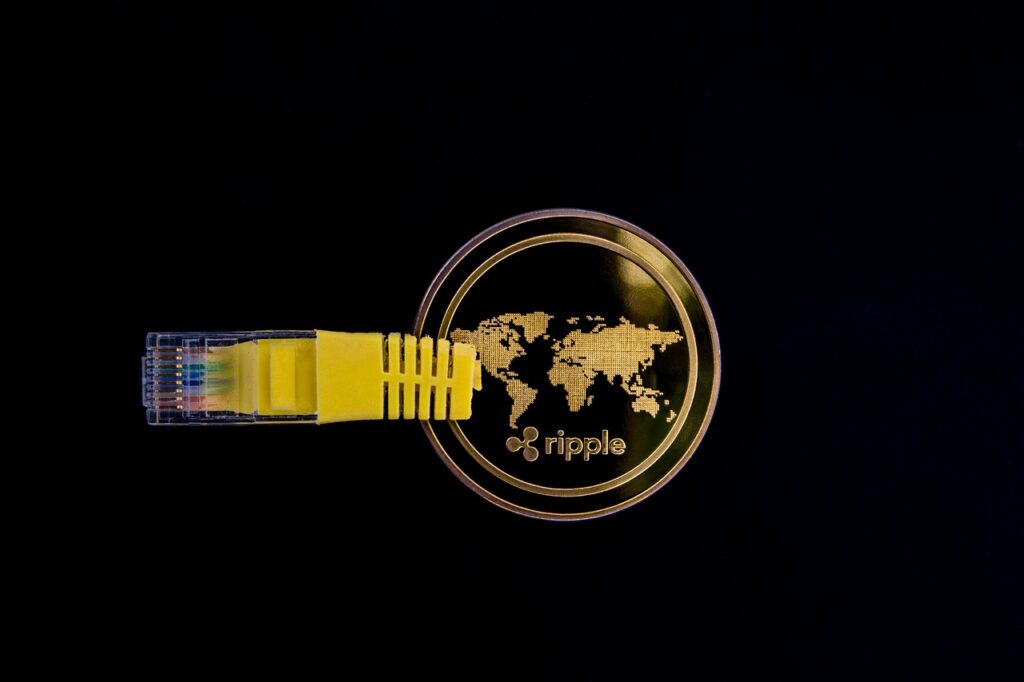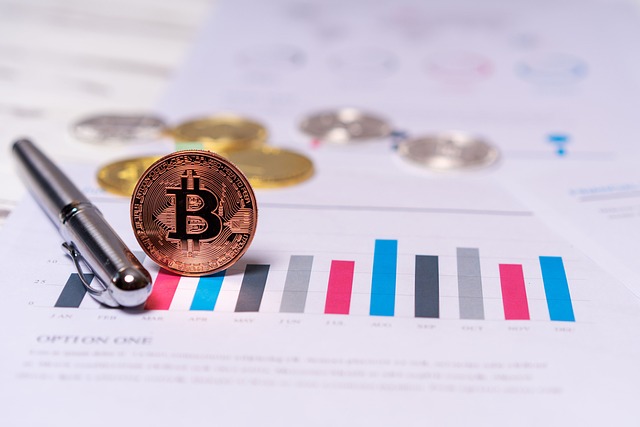Choosing the Right DeFi Platform: A Comprehensive Guide
Choosing the Right DeFi Platform: A Comprehensive Guide

What is DeFi and why is it important?
DeFi, short for Decentralized Finance, is a revolutionary concept that has gained significant attention in recent times. It refers to the use of blockchain technology and smart contracts to recreate traditional financial systems in a decentralized manner. Unlike conventional banking systems, DeFi platforms eliminate the need for intermediaries, such as banks or financial institutions, allowing users to have full control and ownership over their assets.
One of the key reasons why DeFi is important is its potential to democratize financial services and increase financial inclusion. By removing intermediaries, DeFi platforms offer a more accessible and inclusive way for individuals to participate in financial activities. This is particularly significant for the unbanked and underbanked populations who may not have access to traditional banking services. DeFi also enables users to transact, lend, borrow, and invest in a permissionless manner, without the need for a centralized authority.

Understanding the different types of DeFi platforms
Deciphering the various types of DeFi platforms can be a daunting task, especially for those new to the rapidly evolving space. However, gaining a clear understanding of these platforms is crucial in order to navigate the world of decentralized finance effectively. One type of DeFi platform is decentralized exchanges (DEXs). DEXs allow users to trade cryptocurrencies directly with one another, without the need for intermediaries. They provide increased privacy and security, as well as a more open and inclusive trading environment compared to traditional centralized exchanges.
Another type is lending and borrowing platforms, which enable individuals to lend their assets and earn interest or borrow assets in return.

Evaluating the security features of a DeFi platform
When it comes to evaluating the security features of a DeFi platform, it is important to prioritize the safety of your funds and personal information. One key aspect to consider is the platform’s use of encryption technology. Look for platforms that employ strong encryption methods to protect your data and ensure secure transactions. Additionally, consider whether the platform has undergone external security audits or has implemented bug bounty programs to address potential vulnerabilities. These measures can provide reassurance that the platform takes security seriously and actively works to identify and fix any weaknesses.
Another crucial factor to assess is the platform’s approach to custody and private key management. Look for platforms that employ robust and reliable custody solutions to safeguard your assets. Ideally, the platform should utilize cold storage methods, such as offline wallets or hardware wallets, to minimize the risk of hacking or unauthorized access. Furthermore, consider whether the platform provides options for multi-signature authentication, which requires multiple key holders to sign off on transactions, adding an extra layer of security. By evaluating the security measures and practices implemented by a DeFi platform, you can make an informed decision and minimize potential risks to your assets and personal information.
Assessing the user experience and interface of a DeFi platform
When it comes to assessing the user experience and interface of a DeFi platform, simplicity and ease of use are key. A user-friendly platform should make it straightforward for individuals, regardless of their technical knowledge, to navigate and interact with the various features and functions. The interface should be intuitive, with clear instructions and prompts to guide users in their actions. A clean and organized layout can also enhance the overall user experience, ensuring that users can easily locate the information they need and make transactions seamlessly. Additionally, the platform should provide ample documentation and resources for users to understand how to effectively use the platform and troubleshoot any issues they may encounter.
However, it is important to note that user experience is subjective and can vary from person to person. What one individual may find intuitive and easy to use, another may find confusing or overwhelming. Therefore, it is always advisable to try out a demo or trial version of the DeFi platform before committing to it fully. This allows users to test the interface and see if it aligns with their preferences and requirements. Additionally, seeking feedback from other users or reading reviews can provide valuable insights into the user experience of a particular platform. Overall, a positive and seamless user experience can greatly enhance the overall appeal and usability of a DeFi platform.
Comparing the fees and transaction costs of different DeFi platforms
DeFi platforms offer a wide range of financial services, but one crucial aspect to consider is the fees and transaction costs associated with each platform. When comparing different DeFi platforms, it is essential to assess the costs involved to ensure that they align with your budget and investment goals.
An initial point to evaluate is the transaction fees charged by each platform. Some platforms may have fixed transaction fees, while others may charge a percentage-based fee on each transaction. Understanding the fee structure of a DeFi platform is vital to determine whether it aligns with the frequency and volume of your expected transactions.

Researching the team and developers behind a DeFi platform
Researching the team and developers behind a DeFi platform is a crucial step in evaluating the credibility and reliability of the platform. A team with a strong background and expertise in blockchain technology and finance inspires confidence in users and investors. By delving into the team members’ profiles, you can assess their qualifications, experience, and previous projects. Look for teams that have a diverse range of skills to ensure a well-rounded approach to building and maintaining the platform.
Additionally, it is essential to consider the reputation of the developers associated with the DeFi platform. Review their past contributions to the blockchain community and their involvement in successful projects. Developers who have a track record of delivering high-quality code and actively engaging with the user community demonstrate a commitment to the long-term success and sustainability of the platform. Proper due diligence in researching the team and developers can provide valuable insights into the capabilities and dedication of the people behind the DeFi platform.
• Assess the qualifications, experience, and previous projects of the team members
• Look for teams with diverse skills in blockchain technology and finance
• Consider the reputation of the developers associated with the platform
• Review their past contributions to the blockchain community and involvement in successful projects
• Look for developers who deliver high-quality code and actively engage with users
• Proper due diligence can provide insights into capabilities and dedication
Analyzing the liquidity and trading volume of a DeFi platform
When it comes to analyzing the liquidity and trading volume of a DeFi platform, it is essential to consider the availability of assets and tokens on the platform. A platform with a diverse range of tokens allows for more trading opportunities and higher liquidity. Additionally, it is important to take into account the trading volume of the platform, as this indicates the level of activity and interest from users. Higher trading volumes often suggest a more vibrant ecosystem with increased liquidity and potential for profitable trades.
Another factor to assess is the depth of the order book, which reflects the number of buy and sell orders at various price levels. A deep order book indicates a healthy level of market activity and liquidity, as it demonstrates a significant number of participants willing to trade at various price points. On the other hand, a shallow order book may lead to issues such as slippage during trades, especially for large orders. Hence, it is crucial to evaluate the depth of the order book on a DeFi platform to ensure smooth and efficient trading experiences for users.
Considering the available assets and tokens on a DeFi platform
DeFi platforms have gained significant popularity in recent years due to their ability to offer a wide range of assets and tokens for users to trade and invest in. When considering the available assets and tokens on a DeFi platform, it is important to assess the diversity and variety offered. Some platforms may only support a limited selection of popular cryptocurrencies, while others may have a broader range including stablecoins, utility tokens, and even rare digital assets.
Having a diverse range of assets and tokens on a DeFi platform allows users to have more options for investment and trading strategies. It provides flexibility, enabling users to tailor their portfolios to their individual preferences and risk tolerance. Furthermore, a platform with a wide range of assets and tokens indicates the platform’s ability to attract and integrate with various blockchain networks, potentially increasing its liquidity and trading volume. In this regard, users should carefully evaluate the available assets and tokens to ensure they align with their investment goals and strategies.
Exploring the governance and decision-making process of a DeFi platform
When it comes to exploring the governance and decision-making process of a DeFi platform, it is vital to consider the mechanisms in place that drive the platform’s operations. Governance in DeFi is typically decentralized, meaning that decisions are made by a community of token holders rather than a centralized authority. This allows for a more inclusive and democratic decision-making process, where token holders have the power to vote on proposals and determine the direction of the platform. However, it is crucial to assess the level of participation and engagement within the community, as well as the transparency of the decision-making process. An active and engaged community, along with clear communication channels and regular updates, is indicative of a well-governed DeFi platform.
Another important aspect to consider is the decision-making protocol used by a DeFi platform. Different platforms may employ various protocols, such as on-chain voting, liquid democracy, or delegation, to facilitate decision-making. Each protocol has its own strengths and weaknesses, and it is essential to understand how these protocols align with the platform’s goals and values. Additionally, examining the extent of decentralization within the platform’s governance model is crucial. A highly decentralized platform ensures that decisions are not controlled by a small group of individuals or entities, but rather by a wide array of participants. This decentralization principle helps to maintain fairness, reduce the risk of manipulation, and foster trust within the community.
Learning from user reviews and feedback on different DeFi platforms
User reviews and feedback play a crucial role in understanding the strengths and weaknesses of different DeFi platforms. These insights provide valuable information about the user experience, platform performance, and overall satisfaction. When researching and evaluating DeFi platforms, it is essential to delve into the user reviews to get an authentic understanding of what users have experienced.
User reviews often highlight the usability of the platform, including its ease of navigation, clarity of instructions, and overall user interface. Positive reviews often emphasize smooth transactions, user-friendly interfaces, and intuitive designs that make it easy for beginners to navigate the platform. On the other hand, negative reviews may pinpoint issues such as complicated procedures, slow transaction speeds, or difficulties in accessing certain features. Reading through user feedback can give potential users a realistic expectation of what they can expect when using a particular DeFi platform.
What is DeFi and why is it important?
DeFi, short for Decentralized Finance, refers to the use of blockchain technology and smart contracts to provide financial services without intermediaries like banks. It’s important because it allows for more accessible, transparent, and inclusive financial systems.
What are the different types of DeFi platforms?
DeFi platforms can include lending and borrowing platforms, decentralized exchanges, decentralized stablecoins, yield farming platforms, and more.
How can I evaluate the security features of a DeFi platform?
Look for audits conducted by reputable third-party firms, check if the platform has a bug bounty program, review the platform’s smart contracts for vulnerabilities, and see if the team has a strong track record in security.
What should I consider when assessing the user experience and interface of a DeFi platform?
Check if the platform is user-friendly, intuitive, and provides a seamless experience. Look for features like easy account setup, clear navigation, and responsive customer support.
How can I compare fees and transaction costs of different DeFi platforms?
Look for information on transaction fees, gas costs, and any additional fees charged by the platform. Compare these fees across different platforms to find the most cost-effective option.
Why is it important to research the team and developers behind a DeFi platform?
The team’s experience, credibility, and track record are crucial indicators of a platform’s reliability. Researching them helps to ensure you’re investing in a platform backed by knowledgeable and trustworthy individuals.
How can I analyze the liquidity and trading volume of a DeFi platform?
Look for metrics such as total value locked (TVL) and trading volume on the platform. Higher liquidity and trading volume indicate a more active and robust platform.
What should I consider when it comes to the available assets and tokens on a DeFi platform?
Check if the platform supports the assets and tokens you’re interested in trading or using. Consider the variety and quality of assets available to ensure the platform meets your specific needs.
What is governance in DeFi and why is it important?
Governance in DeFi refers to the decision-making process for platform updates, changes, and protocol management. It’s important because it allows users to have a say in the platform’s future and ensures transparency and accountability.
How can I learn from user reviews and feedback on different DeFi platforms?
Read user reviews and feedback on forums, social media, and review platforms. Pay attention to common themes, positive and negative experiences, and the overall reputation of the platform to gain insights from other users’ experiences.
Todays Featured Product:
Buy, exchange and grow your crypto securely with a Ledger hardware wallet, combined with the Ledger Live app. It’s never been easier to keep your crypto safe and accessible. Buy direct from Ledger.com and get todays Special Offers Here.




